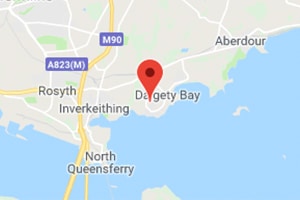The 18th edition is a common shorthand term used by industry professionals to refer to the most recent British Standards BS 7671:2018 Requirements for Electrical Installations, IET Wiring Regulations. That’s a bit of a mouthful, so you will often hear it abbreviated to wiring regs, the regs, BS 7671, or the 18th edition wiring regs.
It is important that all electricians working in the UK have a full understanding of the 18th edition and how it applies to any job that they carry out. If you are not up to date on the latest changes that have been introduced by the 18th edition, we offer a comprehensive 18th edition course that teaches you everything that you need to know.
What Is The 18th Edition?
All electricians in the UK must follow the guidelines set out in the IET Wiring regulations when installing wiring of any kind. This document is considered to be one of the most important documents for electricians operating in the UK, so it’s important that you know it inside out. The regulations cover the erection of any new electrical appliances, as well as the maintenance of existing ones, including any additions or alterations that may be made.
The 18th edition of the wiring regulations (BS 7671:2018) was published in 2018 by the Institute of Engineering and Technology (IET), and they replace the previous edition that was first published back in 2008 before being updated in 2015. The 18th edition includes some new and revised rules, as well as changes to the structure of the document. The rules and regulations set out in the 18th edition came into effect in January 2019, so if you are still unsure about the guidelines, you may be working outside of the strict guidelines.
These wiring regulations have been an important part of an electrician’s job since they were first published way back in 1882. They are regularly updated to adapt to new technologies and safety practices, so it’s important for electricians to be up to date with the 18th edition.
Many people think that these guidelines are a legal document but that is not actually the case. The BS 7671, or 18th edition, is not a legal document in itself. However, it does outline all of the rules and guidelines that must be followed during any electrical installation in order to comply with the Electricity at Work Regulations. So, even though it is not technically a legal document, the 18th edition is treated as one and the industry recognises it as an authority that needs to be followed to the letter.
Do You Need The 18th Edition?
Some people are unsure about whether the 18th edition applies to them or not. If you work in electrical installation in any capacity, you need to follow the guidelines set out in the 18th edition. They are designed to ensure that all people, livestock, and property are protected and that any electrical fixtures that you design or install are perfectly safe. They also ensure that the electrical installations function properly. Although electricians are the most common group that need the 18th edition, other professions, like engineers also need it.
Why Do You Need To Know About The 18th Edition
A lot of electricians feel that they already know their trade and they don’t need to know about the new regulations, especially if technology hasn’t changed all that much. People that have been working as electricians for years already know how to install electrical fixtures safely, so they don’t think that they need to take an 18th edition course. However, if you work on a wiring installation in the UK, the 18th edition applies to it and you need to know about it.
If you don’t know all of the regulations that are outlined in the 18th edition, there is a strong chance that your installations are unsafe or inefficient, and they do not meet the guidelines. This is an issue for electricians because it can seriously damage your business if you carry out work that is dangerous.
The full IET Wiring Regulations, often referred to as the big blue book, is a massive document and nobody is expected to know the whole thing inside out. There is a lot of information in there that will only be used occasionally and many electricians won’t use it at all, so memorizing it all is not necessary. However, electricians are expected to know how to look up relevant information when they need to, and apply it to certain situations.
Even though you do not need to know the full IET Wiring Regulations, you do need a good knowledge of the 18th edition and a qualification to prove it. When you are registering as a domestic installer on a competent persons scheme, you will need to prove that you are up to date with the latest regulations. Even if you have completed a level 3 NVQ, you will still need your 18th edition qualification. You will also be asked for the qualification when you register with the new ECS Check System. The ECS Check System allows clients and contractors to check whether an electrician has an Electrotechnical Certification and if you are not registered, you may struggle to find work.
Large companies will often only work with electricians that have the 18th edition qualification, so if you don’t have one, you are limiting yourself and you will lose a lot of work.
What Are The Main Changes In The 18th Edition?
You may be wondering how different the new versions of the regulations are, and whether you really need to take an 18th edition course or not. But the regulations are very different in the 18th edition so you need to stay up to date. Some of the most notable changes include:
Protection against electric shock – Chapter 41
There are a number of significant changes to this chapter, mainly to do with metallic pipes entering the building.
- Maximum disconnection times for certain final circuits has been changed.
- All socket outlets with a rated current of 32A or less are now governed by regulation 411.3.3
- Regulation 411.3.4 has been added, and it requires that additional protection by an RCD is provided for all final AC circuits supplying luminaires in domestic premises.
- Chapter 42 on protection against thermal effects has been significantly altered.
- Regulation 421.1.7 has been introduced to recommend the use of Arc Fault Detection Devices (AFDDs) to reduce the risk of fires in AC final circuits caused by arc fault currents.
Selection and Erection of Wiring Systems – Chapter 52
There is one significant change in this chapter. Regulation 521.10.202 now requires all cables to be supported against collapse in the event of a fire. Previous regulations only required cables to be supported in escape routes, but the new version states that this must be the case throughout the installation.
Electric vehicle charging installation – section 772
Regulation 722.411.4.1, which deals with the use of a PME supply has been changed significantly. The rules around external influences, RCDs, socket outlets and connectors have all been changed.
Energy Efficiency – Appendix 17
This new appendix provides a lot of guidelines and suggestions for energy efficiency when designing and erecting electrical installations.
These are just some of the many significant changes that have been made in the 18th edition.

